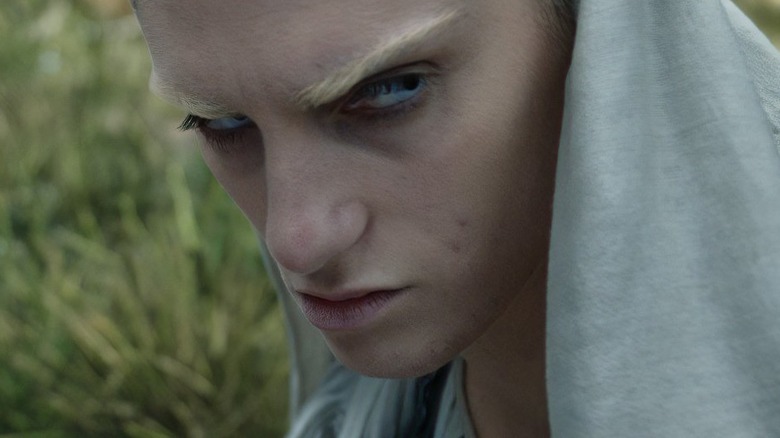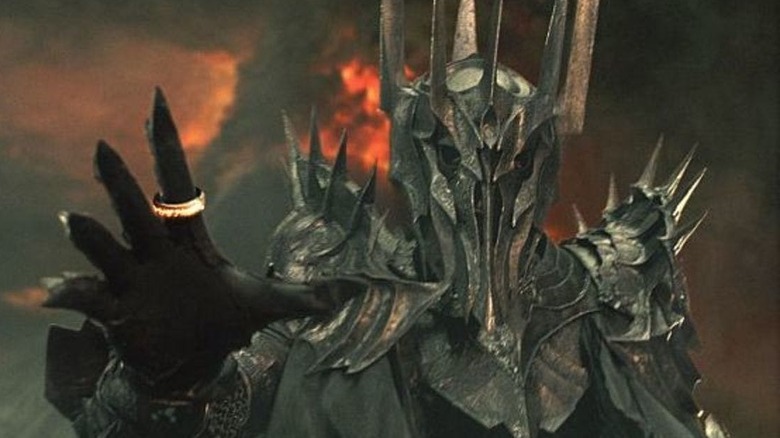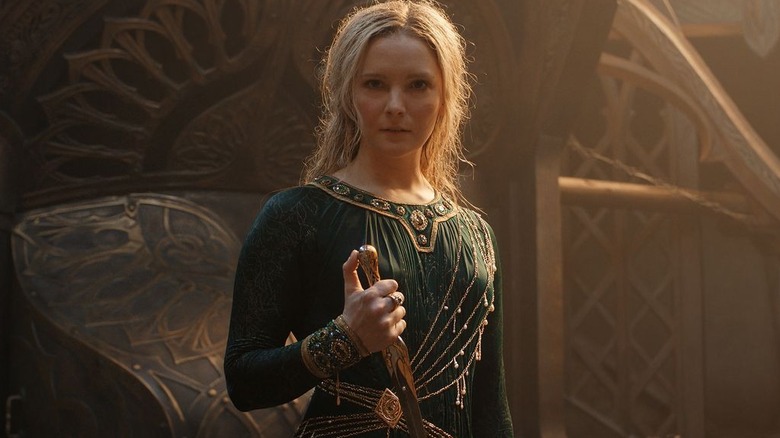The Role Of Shape-Shifting In Middle-Earth Explained
In the complex and wonderfully exhaustive universe that J. R. R. Tolkien created, magic systems are almost exclusively soft — that doesn't make the magic weak, but rather undefined. A soft magic system is nebulous and mysterious. In contrast, a hard magic system features rigid structuring (an excellent example of a hard magic system is the alchemy in "Full Metal Alchemist: Brotherhood"). For Tolkien, the second description really only applies to the immense linguistic detail that engulfs Middle-earth. His magic, while wonderous and mighty, exists solely in the realm of narrative fog.
Take shape-shifting, for example. It's an ability that seemingly every wizard and even some elves are capable of accomplishing. Unlike many of Gandalf's light-based casting abilities, shape-shifting at least feels tangible because there is an immediate, understandable result. It's almost as if Tolkien uses this aspect of magic to remind his readers that his books are, in fact, fantasy. Let's take a moment to look at the role of magical transformations in the world of Middle-earth.
A skill as old as time
Take a deep breath because we're about to sift through some hefty exposition. With J.R.R. Tolkien, there's no other kind. In his written work, shape-shifting is a relatively common magical ability. Tolkien described a specific subset of these individuals as Skin-changers, Shape-changers, or Beornings (everything and everyone has at least seven different names, just go with it). Beornings, in particular, can be described similarly to giants in that they were really, really tall humanoid beings. They just happened to be able to change their form into that of equally bulky bears. These are the most prominent shapeshifters in Middle-earth but by no means the only ones.
In "The Silmarillion," also known as that old book on which "The Lord of the Rings: The Rings of Power" is loosely based, Beren and Lúthien — a human and an elf, respectively, both madly and disastrously in love — don the form of a wolf and a bat. Also, in "The Silmarillion," Sauron, that pesky sorcerer who simply refuses to die, changes forms multiple times. Depending on the day, Sauron can be found as a beautiful fiery spirit, a demon warlord, a vampire, a werewolf, a serpent, a regular dude ... the list goes on. The guy was all about drama. Other examples include the Ainur and the Maiar (which Sauron was), the first two peoples to inhabit Middle-earth. In "The Silmarillion," these beings could do many great things, including shape-shifting.
The purpose of power
Warning: Spoilers for "Lord of the Rings: The Rings of Power" ahead.
Okay, that's the heavy stuff; it gets a little easier from here on out. Shape-shifting is used in one of three ways in Tolkien-correlated media. Firstly, it can simply be word building, like we see with the Ainur or the Beornings. Secondly, it's used to develop character, as we see in Peter Jackson's "The Lord of the Rings" trilogy when Gandalf (Ian McKellen) transforms from Gandalf the Grey to Gandalf the White upon death and reincarnation.
We can also use Sauron's backstory as an example here, as his continuous use of shape-shifting clearly denotes the kind of spectacle-seeking monster he is. Also to consider, in Amazon's "The Lord of the Rings: The Rings of Power," Galadriel (Morfydd Clark) accuses Elrond (Robert Aramayo) of being Sauron, it's actually Halbrand (Charlie Vickers), thus proving her grip on reality to be a bit ... skewed, thanks in part to the deceitful nature that can surround shape-shifting magic.
Thirdly, shape-shifting is used to further the plot itself. In these instances, the ability directly affects the events of the story, like how, in "The Lord of the Rings: The Rings of Power," the White Cloaks — servants of Sauron — use shape-shifting to appear as Nori Brandyfoot (Markella Kavenagh) to misguide The Stranger (Daniel Weyman). To summarize, such transformations can be used for literally every conceivable narrative purpose, and they are utilized consistently because fantasy stories are infinitely cooler when they add a dash of Animorphs into the mix.


